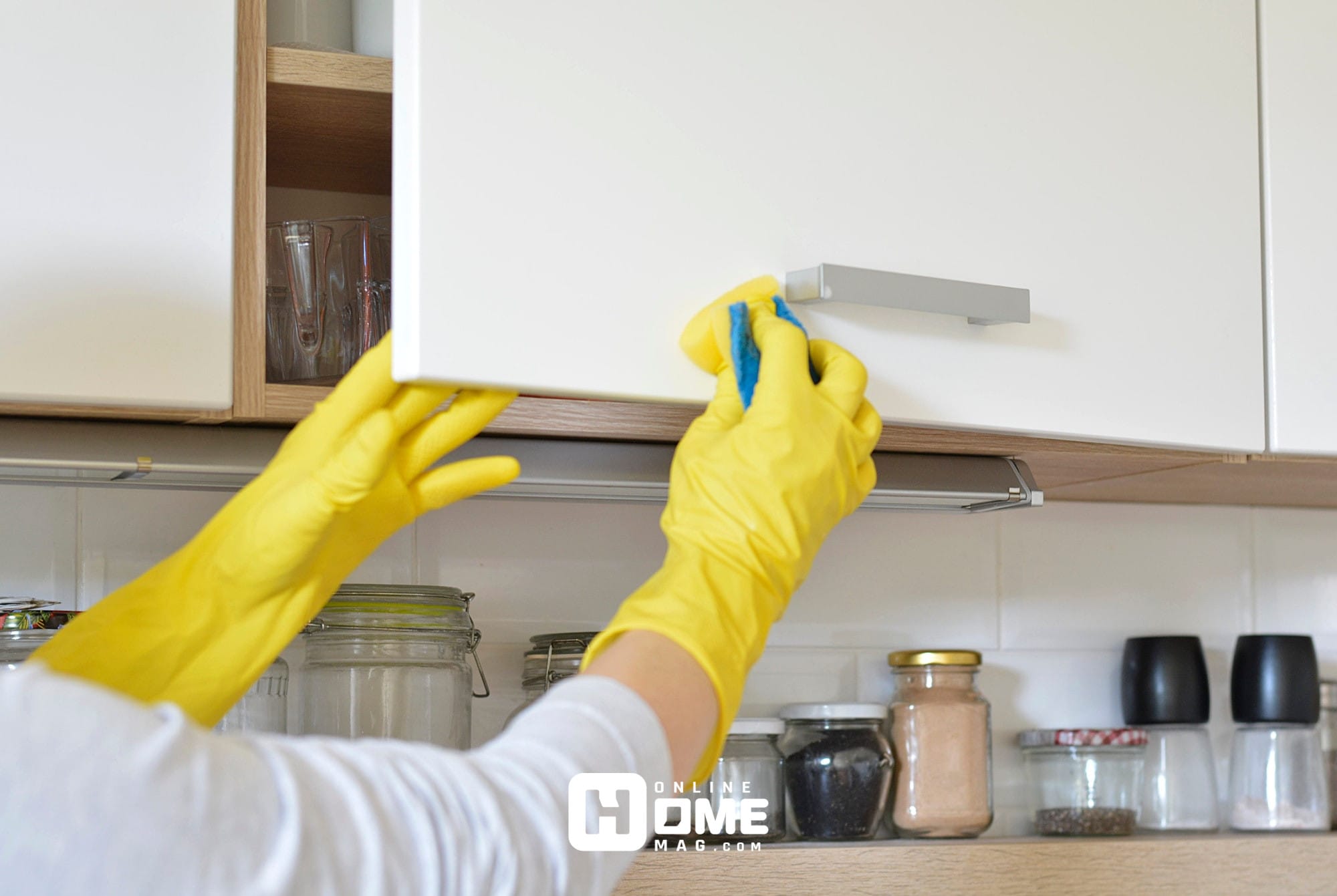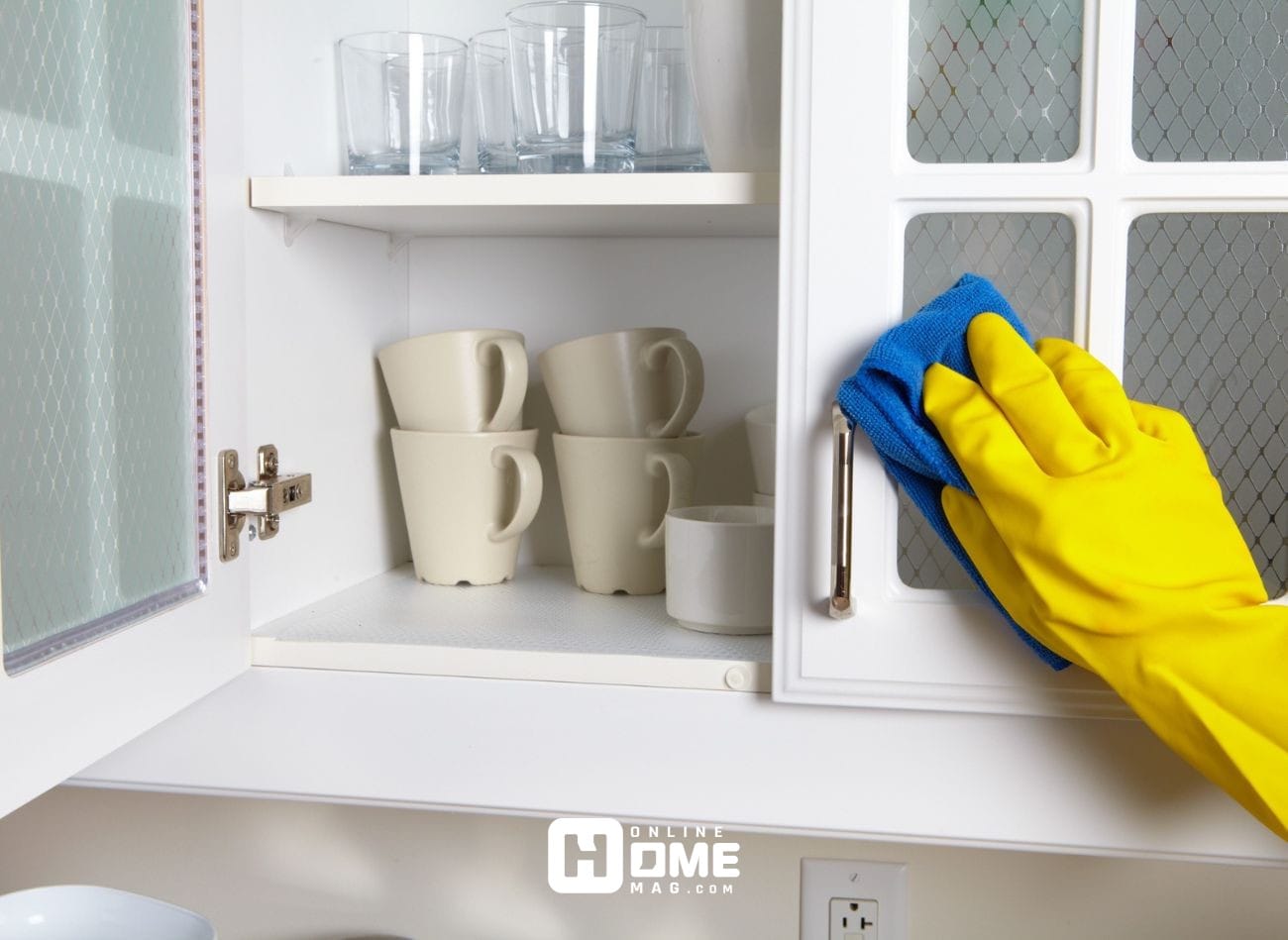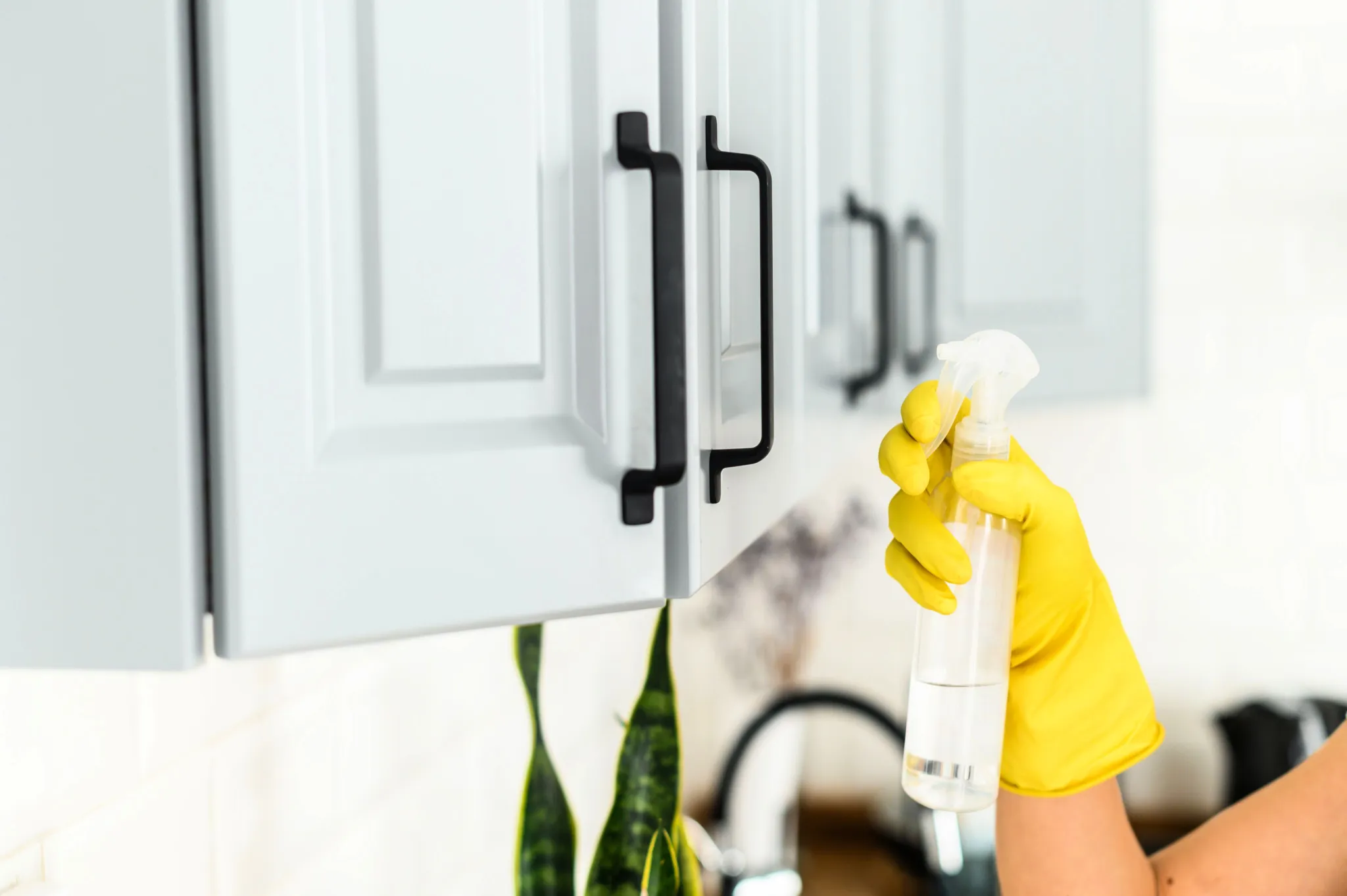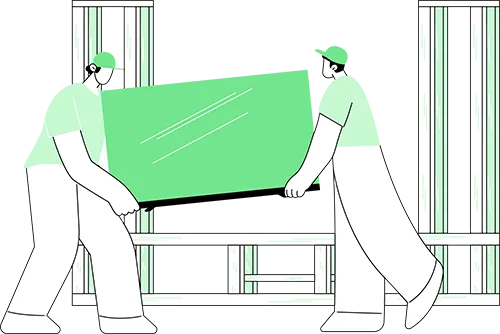Why You Should Regularly Clean Kitchen Cabinets
Cabinets are used multiple times a day, meaning they are highly exposed to:
- Grease and oil splatter from cooking
- Steam and moisture from boiling water
- Sticky residues from spills
- Dust and dirt particles in the air
If you neglect regular cleaning, this buildup can damage finishes, attract pests, and even lead to mold growth. A consistent cleaning routine not only keeps your kitchen sanitary but also preserves the appearance of your cabinetry.

Supplies You’ll Need to Clean Kitchen Cabinets
Before you start to clean kitchen cabinets, gather the following supplies:
- Warm water
- Dish soap (gentle, grease-cutting)
- White vinegar (optional for natural cleaning)
- Baking soda (for tough stains)
- Microfiber cloths or soft rags
- Soft-bristle toothbrush or cleaning brush
- Spray bottle
- Dry towel or absorbent cloth
- Wood polish (optional, for wood cabinets)
Step-by-Step: How to Clean Kitchen Cabinets
Follow this step-by-step guide to clean kitchen cabinets thoroughly and safely. From emptying your cabinets to applying polish, each step below ensures a deep and effective clean.
Step 1: Empty the Cabinets
Start by removing everything inside your cabinets. This allows you to reach all corners and prevents your items from getting wet or damaged during cleaning.
Step 2: Dust and Vacuum
Use a dry microfiber cloth or a handheld vacuum to remove loose dirt, crumbs, and dust from inside and outside the cabinets.
Step 3: Mix a Cleaning Solution
For most surfaces, a simple cleaning solution works best:
- Mix a few drops of dish soap with warm water in a bowl.
- For greasy surfaces, add one cup of white vinegar to one cup of warm water.
- For wood cabinets, avoid excessive water; use a damp (not soaked) cloth.
Pour the solution into a spray bottle if needed.
Step 4: Clean the Exterior
Spray the solution onto a microfiber cloth (not directly on the cabinet) and wipe down all exterior surfaces, including doors, handles, and edges.
Use a toothbrush or soft brush to clean around hardware or in any crevices.
Step 5: Clean the Interior
Wipe the inside walls and shelves of the cabinets with the same solution. Be sure not to over-wet the cloth.
Step 6: Remove Tough Stains and Grease
For stubborn spots or greasy buildup:
Sprinkle baking soda on a damp cloth and gently scrub the area.
Let the paste sit for 2–3 minutes on tough grease, then wipe away.
Do not use abrasive sponges or steel wool, which can damage surfaces.
Step 7: Rinse and Dry
Wipe all surfaces again with a clean, damp cloth to remove any soap residue. Then, dry thoroughly with a soft towel to prevent water damage or warping—especially for wooden cabinets.
Step 8: Optional – Apply Wood Polish
If your cabinets are wooden, you can finish by applying a light coat of wood polish or conditioner to restore shine and prevent drying or cracking.

How Often Should You Clean Kitchen Cabinets?
- Weekly: Wipe down high-touch areas like handles and lower cabinet doors near the stove or sink.
- Monthly: Do a quick overall wipe-down with a mild cleaner.
- Every 3–6 Months: Deep clean inside and out, remove all items, and clean thoroughly.
Regular maintenance makes it easier to keep your kitchen looking great and reduces the need for deep scrubbing later.
Tips for Specific Cabinet Types
Different materials require different care. Here are some tailored tips to clean kitchen cabinets based on whether they’re wood, laminate, or painted.
1. Wood Cabinets
- Avoid soaking wood—moisture causes warping.
- Use oil soap or a cleaner designed specifically for wood.
- Polish occasionally to maintain shine.
2. Laminate or Thermofoil Cabinets
- Easy to clean with dish soap and water.
- Avoid harsh chemicals that can peel the laminate.
- Great for using vinegar-based solutions.
3. Painted Cabinets
- Gentle dish soap works best.
- Avoid scrubbing too hard to prevent removing paint.
- Spot test any cleaner before applying to the whole surface.
Avoid These Common Cleaning Mistakes
- Don’t use abrasive tools: Steel wool, rough pads, or hard brushes can scratch finishes.
- Avoid bleach or ammonia: These can discolor cabinets and damage protective coatings.
- Don’t skip drying: Leaving surfaces damp encourages water damage and mold growth.
- Never spray cleaner directly: Always spray on a cloth first to avoid saturation.
Natural Alternatives to Clean Kitchen Cabinets
If you prefer chemical-free options:
- White vinegar + water: Effective for cutting grease and disinfecting.
- Baking soda + water paste: Great for scrubbing tough spots.
- Lemon juice: Adds a fresh scent and has mild antibacterial properties.
These options are safe, eco-friendly, and often already in your pantry.


